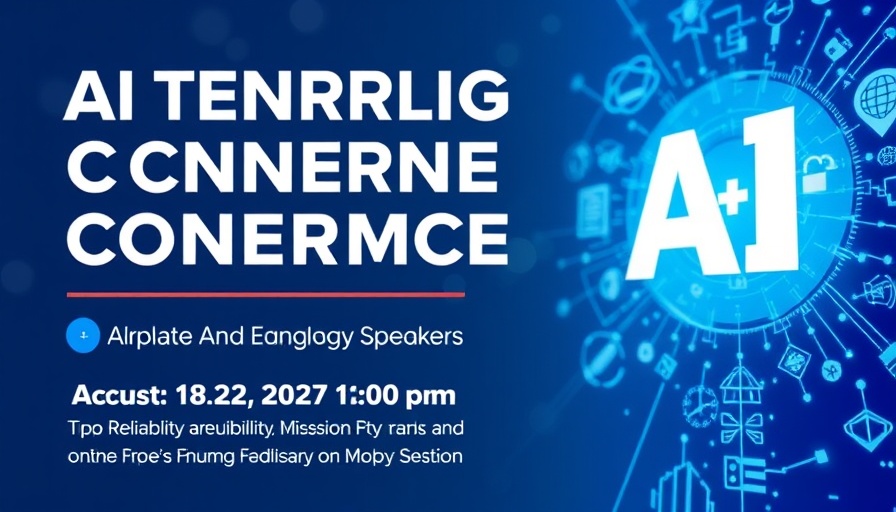
The Evolution of AI Agents: A New Era for Businesses
In today's fast-paced business landscape, organizations are rushing to integrate agentic AI into their operations. While the excitement around this technology is palpable, there remains no definitive playbook guiding businesses on how to implement these sophisticated systems effectively. Instead, companies are learning and adapting on the go as the definition of agentic AI evolves and as new models emerge. Considering this dynamic environment, understanding how to build reliable AI agents for mission-critical tasks is vital.
In 'How to build reliable AI agents for mission-critical tasks', the conversation delves into the importance of AI reliability, inspiring us to analyze its implications further.
Understanding Agentic AI: More Than Just Chatbots
At the core of agentic AI is the concept of moving beyond traditional chatbots. Unlike typical AI interactions that culminate in providing answers, an agent underlines a more robust process: planning, executing tasks, and reflecting on outcomes. This means that instead of merely answering questions, agents can proactively manage workflows, automate processes, and take meaningful actions. The distinction here is essential as businesses look to adopt technology that can genuinely enhance operational efficiency.
The Immediate Need for Trust and Reliability
As enterprises start deploying AI agents across sectors like finance, healthcare, and logistics, cultivating trust becomes paramount. Many enterprises are wary of relinquishing control to AI systems, especially those handling sensitive and mission-critical tasks. To navigate these concerns, organizations must prioritize building a reliable framework for their AI implementations. This process often involves incorporating rigorous testing mechanisms and establishing clear evaluative metrics, ensuring that AI agents not only function correctly but handle exceptions wisely.
Real-World Applications: Success Stories and Expectations
From supply chain management to customer service, businesses are beginning to see the transformative impacts of agentic AI. For instance, a company may deploy an agent to analyze inventory data across warehouses and automatically place orders. This demonstrates how businesses can leverage AI agents to streamline and enhance operations, ultimately leading to significant cost savings and faster service delivery. Companies that have already placed agents in live scenarios attest to the benefits, showing that reaching operational efficiency is more achievable with this technology.
Future Trends: The Road to Multi-Agent Systems
As we look ahead, the evolution from single agent interactions to multi-agent systems represents an exciting frontier. Soon, we could see networks of AI agents communicating and collaborating to execute complex tasks. However, moving toward this innovative direction entails addressing critical questions of trust, authenticity, and seamless communication. It’s essential for companies to establish clear protocols and standards that will empower interconnected agents to function effectively and securely in collaborative environments.
Taking Action: Preparing for a Multi-Agent Future
The path forward requires proactive engagement. Business leaders need to understand not only the capabilities of agentic AI but also the implications of deploying these technologies responsibly. Taking initial steps toward ensuring reliability and establishing quality control frameworks is imperative. Those who commit to this transformation today will be uniquely positioned to thrive as we move into a world governed increasingly by micro-agentic architectures.
 Add Row
Add Row  Add
Add 




Write A Comment